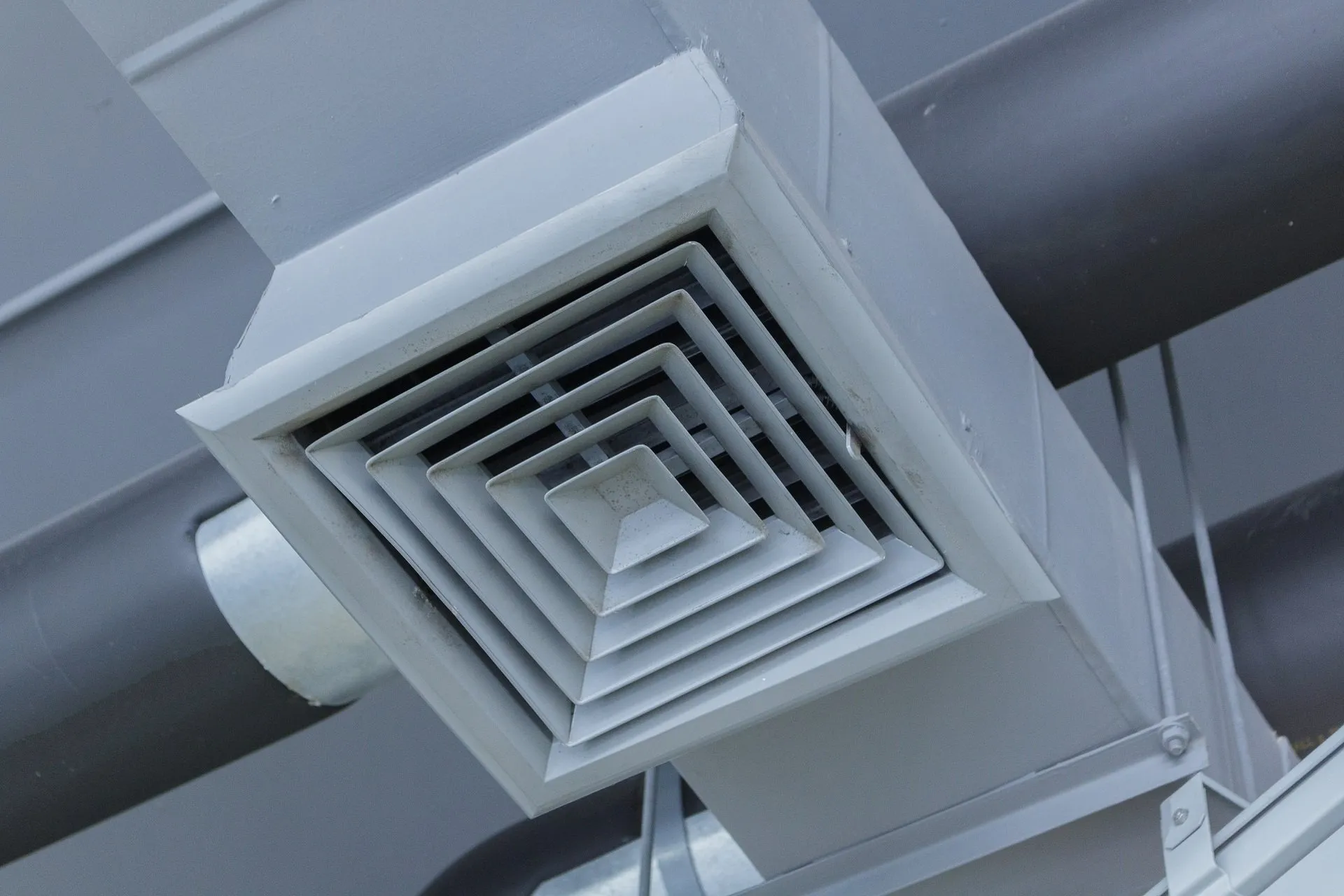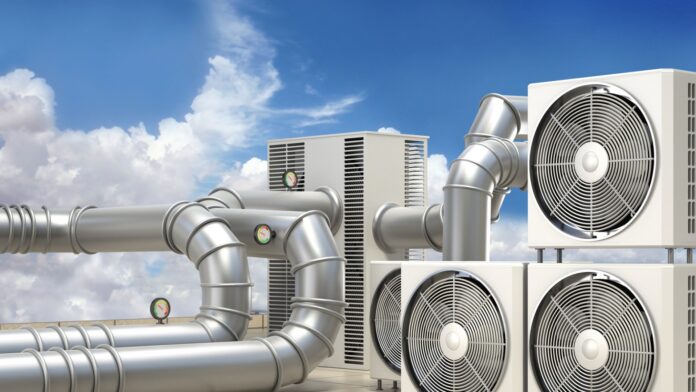In today’s fast-paced world, we often overlook the importance of the air we breathe. Air quality plays a significant role in our overall health and wellbeing. One essential aspect of ensuring good air quality is proper ventilation. Air Ventilation is not merely about circulating air but ensuring that the air is fresh and pure. It’s crucial for maintaining a healthy living and working environment, contributing to our overall wellbeing and productivity.
The Fundamentals of Fresh Air Heater
A fresh-air heater serves as a cornerstone in ventilation, functioning by drawing outdoor air into a building. This system takes the cooler external air, warms it to a set temperature, and then circulates it within an indoor space. The operation of a fresh air heater is a sophisticated blend of ventilation and heating, ensuring that indoor environments remain comfortable regardless of the outdoor climate.
This air exchange method supports indoor temperature regulation and plays a pivotal role in introducing a steady stream of fresh air. The infusion of outdoor air helps dilute and displace indoor pollutants, thereby enhancing air quality within a space. The fresh-air heater stands as a critical component in the architecture of modern ventilation systems, marrying the necessity of thermal comfort with the imperative of air quality management.
Its operation underscores the seamless integration of temperature control with the vital task of ensuring healthful indoor air. Indeed, it provides a robust solution to balance achieving optimal indoor comfort and prioritizing air quality, which is essential for overall health and wellbeing. The sophisticated technology of a fresh-air heater makes this task simpler and more effective.
Enhancing Indoor Air Quality through Ventilation
Ensuring a robust ventilation system is pivotal in mitigating the accumulation of indoor pollutants detrimental to health and wellbeing. In environments lacking adequate air circulation, contaminants such as dust mites, volatile organic compounds (VOCs), and carbon dioxide can reach harmful levels. These pollutants originate from everyday activities and materials, including cleaning products, furniture, and electronic devices.
Effective ventilation systems facilitate the exchange of indoor air with fresh outdoor air, significantly reducing the concentration of these pollutants. Optimal ventilation is not merely about refreshing the air but also involves controlling humidity levels. Excessive moisture can encourage the growth of mould and mildew, which are known to exacerbate respiratory issues.
Ventilation systems are critical in sustaining an environment that promotes respiratory health, comfort, and wellbeing by balancing air exchange and humidity control. Advanced ventilation strategies, such as demand-controlled ventilation, further optimize air quality by adjusting airflow based on occupancy levels and indoor pollutant concentrations, ensuring that indoor environments are healthy and energy-efficient.
The Role of Using the Air Ventilation Unit
Using an air ventilation unit is integral to achieving an optimal indoor climate, seamlessly blending the necessity for comfort and health within our living or working spaces. These units are the powerhouse behind effective air circulation, ensuring that stale, polluted air is replaced with fresh, filtered air from outside. The primary function revolves around its ability to efficiently manage air exchange rates, keeping indoor air pollutants to a minimum while maintaining desired temperature levels.
Furthermore, ventilation units are crucial in addressing the challenges posed by both humidity extremes. They aid in reducing excess moisture in the air during damp conditions, which helps prevent the growth of mould and mildew. Conversely, in dry conditions, they can help maintain a humidity level that prevents skin, eyes, and respiratory irritation. This dual role emphasizes not only the comfort aspect but also the health benefits of using such systems.
The strategic placement and operation of ventilation units can also mitigate the risks associated with airborne pathogens, providing a safer environment during health crises or in areas prone to infectious diseases. This underscores their importance in not just maintaining but actively improving the health standards of indoor environments, making them indispensable in the pursuit of a healthier indoor atmosphere.
Boosting Productivity and Cognitive Performance
Ample research supports that ventilation significantly influences mental acuity and workplace efficiency. High-quality air circulation is pivotal in fostering an environment where focus and alertness thrive. Poor air quality, characterized by elevated levels of carbon dioxide and other pollutants, has been linked to a decline in cognitive performance, affecting decision-making processes, concentration, and problem-solving abilities.
Conversely, environments with optimal ventilation promote a refreshing and invigorating atmosphere conducive to mental clarity. This is particularly beneficial in workspaces where intellectual engagement and creativity are paramount. An increase in oxygen levels through effective air exchange can combat lethargy and enhance overall mood, facilitating a more dynamic and productive work culture.
 Moreover, the strategic introduction of clean air helps mitigate the afternoon slump many experience, boosting sustained daily performance. Implementing a robust ventilation system is not just about maintaining a comfortable temperature; it’s about elevating individuals’ cognitive function and productivity, enabling them to perform at their best.
Moreover, the strategic introduction of clean air helps mitigate the afternoon slump many experience, boosting sustained daily performance. Implementing a robust ventilation system is not just about maintaining a comfortable temperature; it’s about elevating individuals’ cognitive function and productivity, enabling them to perform at their best.
Balanced Ventilation System and Energy Efficiency
A balanced ventilation system exemplifies an innovative approach to achieving harmony between indoor air quality and energy conservation. Unlike traditional ventilation methods that might inadvertently increase energy usage due to unregulated air exchange, balanced systems meticulously manage the inflow and outflow of air. This precision ensures that for every unit of air expelled, an equal amount is introduced into the space, maintaining a constant and controlled environment.
These systems often incorporate heat recovery ventilators (HRVs) or energy recovery ventilators (ERVs) that play a pivotal role in preserving indoor thermal conditions. Transferring heat (and, in the case of ERVs, moisture) between incoming and outgoing airstreams significantly reduces the energy demands of heating or cooling the fresh air. Consequently, this not only minimizes the environmental footprint of buildings but also leads to tangible reductions in utility costs.
Implementing a balanced ventilation strategy is especially beneficial in climates with extreme temperatures, where maintaining indoor air quality could otherwise result in substantial energy consumption. Balanced ventilation systems are a sophisticated solution to the modern challenge of creating efficient, healthy indoor environments by optimizing air exchange without compromising thermal comfort.
Implementing Effective Air-Ventilation Solutions
Navigating the array of ventilation solutions available requires careful consideration to match the unique needs of each building or space. The market offers a diverse range of systems, from those that automate the process of air exchange to simple yet effective natural methods that leverage wind and thermal buoyancy. Consulting with a qualified HVAC professional is crucial in assessing a space’s specific requirements, considering factors such as size, occupancy, and local climate conditions.
These experts can guide the selection process, ensuring that the chosen system optimizes air quality and aligns with energy efficiency goals. For instance, mechanical ventilation systems with advanced filters and energy recovery units can control fresh air flow while minimizing energy consumption.
On the other hand, enhancing natural ventilation through strategic window placement and operable openings can capitalize on natural forces to refresh indoor environments, offering a cost-effective alternative in suitable climates. Engaging with professionals will also help in understanding the maintenance needs of the installed system, ensuring its longevity and performance. Individuals and organizations can significantly improve indoor air quality by prioritizing a tailored approach to ventilation, contributing to healthier and more productive environments.
The Future of Air-Ventilation: Trends and Innovations
The evolution of air-ventilation systems is geared towards further integrating cutting-edge technology to enhance indoor air quality and user convenience. Innovations on the horizon include developing intelligent ventilation systems capable of learning from the environment and adapting airflow accordingly. These systems utilize real-time sensors to monitor indoor air quality, adjusting ventilation rates to optimize air purity and energy consumption. Another significant trend is the emergence of green ventilation technologies.
These eco-friendly solutions focus on reducing the carbon footprint of buildings by leveraging renewable energy sources to power ventilation systems. Photovoltaic-powered fans and geothermal heating and cooling systems exemplify how sustainable practices are incorporated into ventilation design. Additionally, advancements in air purification technologies are set to redefine standards of cleanliness.
Innovations such as ultraviolet (UV) light air purifiers and next-generation HEPA filters promise to eliminate microscopic pollutants with unprecedented efficiency. As these trends unfold, integrating smart home ecosystems with ventilation systems is becoming increasingly seamless, offering users unparalleled control over their indoor environments through smartphone apps and voice commands.
Benefits of Industrial Ventilation
Industrial settings often deal with many airborne pollutants, from hazardous chemical vapours to fine particulate matter, making effective ventilation indispensable. A well-designed industrial ventilation system is tailored to meet these challenges head-on, efficiently extracting contaminants directly from their source and significantly reducing the risk of occupational diseases.
Such systems are pivotal in maintaining a cleaner, safer work environment, which protects workers’ health and complies with stringent occupational health and safety regulations. Beyond health considerations, optimized ventilation contributes to operational efficiency. It prevents the accumulation of dust and debris on machinery, reducing wear and tear and extending the lifespan of equipment.
It leads to lower maintenance costs and minimal disruptions in production processes. Moreover, by controlling atmospheric conditions, industrial-ventilation supports precision in manufacturing tasks sensitive to humidity and temperature fluctuations. This precision, in turn, enhances product quality and consistency, providing a competitive edge in the market. In essence, this ventilation is a key factor in safeguarding worker health, ensuring regulatory compliance, and bolstering production efficiency in industrial environments.
FAQS
Q: How Often Should Ventilation Systems Be Maintained Or Checked?
A: To ensure optimal performance, it’s recommended that ventilation systems undergo professional inspection at least once a year. However, the frequency can depend on the system type and usage. Regular maintenance, such as filter changes, should be done according to the manufacturer’s guidelines or more frequently in high-pollution areas.
Q: Can Air-Ventilation Help Reduce Energy Costs?
A: Yes, modern ventilation systems, especially those equipped with energy recovery ventilators (ERVs) or heat recovery ventilators (HRVs), can help reduce energy costs. These systems minimize the need for additional heating or cooling by reclaiming energy from exhaust air.
Q: Is Natural Ventilation Sufficient To Maintain Good Air Quality?
A: While natural ventilation can be effective in certain climates and conditions, it might only sometimes provide consistent air quality control, especially in areas with high outdoor pollution levels or during extreme weather conditions. Mechanical ventilation systems offer more control over air exchange rates and filtration.
Conclusion
The essence of their discussion underscores the pivotal role of air ventilation in fostering a conducive environment for health, productivity, and comfort. The strategic implementation of ventilation solutions transcends mere temperature control, deeply embedding itself into our daily life’s fabric. By proactively addressing indoor air quality through various ventilation strategies, we arm ourselves against pollutants and enhance our air quality. This commitment to air-ventilation supports our physical wellbeing and invigorates our mental faculties, enabling us to achieve optimal performance.
| Other Good Articles to Read |
| Niche Blogs Connect |
| Blogs 97 |
| Blog Stitution |
| Blogs Unplugged |
| Blogs Cotch Rouge |
| Blog Signatr |
| Blog Sintonias |
| Blog Zilla |
| Consumer Forums |
| Finance Forums |
| Too Blog |
| Related Business Listings |
| Contact Directory |
| Local Business Profiles |

